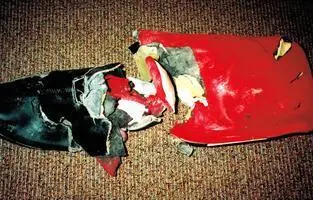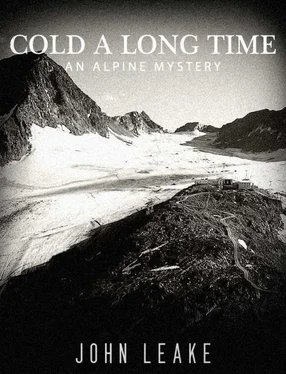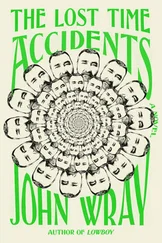The Ski Boots
The boots are largely undamaged except for the liner of the left boot, which was separated from the boot. Most of the liner is shredded; the upper part is intact except for three gouge marks with the same spacing as the gouge marks on the bottom of the snowboard. The right side of the liner near the big toe has a punch mark the same width as tiller tine, and particles of red paint are lodged in the fabric. The insole of the liner is missing.
The Clothing
As is typical of accidents involving machinery, the sleeves of Duncan’s clothing (rain jacket and purple sweatshirt) have been ripped off and shredded. The sweatshirt on the torso is intact except for a single tear just below the left breast—another sign that the torso was not subjected to force. The left sweatpants leg and the left nylon gaiter have been cut in multiple places. The left side of the denim shorts that Duncan wore under his sweatpants has been shredded and ripped away, and his undershorts have been completely torn off of his body. His nylon wallet, which he was presumably wearing in the left pocket of his denim shorts, has a hole punched through it the same width as a tiller tine. Two plastic cards in his wallet are punched with the same holes. His Casio watch, which he wore on his left wrist, bears no signs of ice pressure and grinding—an indication that the segmental fractures below and just above the wrist were not caused by ice flow. A small dent on the watch’s housing is most likely from where it struck the tiller casing as it went through the machine around his wrist, which passed between two tines. In the discovery scene photos, the ripped and torn left sweatpants leg in bunched in a heap next to his left side, and his undershorts are draped across the top of the boot. The right leg of his shorts and his sweatpants are largely intact, indicating that the cutting and tearing force was applied only to the left leg.
Duncan’s Arms and Left Leg
As Doctors Burbridge, Walker, Straathof, Nafte, Weinstabl, Gollogly, and Herold agreed, the injuries on Duncan’s arms and left leg bear the distinct patterns of contact with machinery.
Position of Body and Equipment
In the discovery scene photographs, Duncan’s body is lying horizontally in the transverse crevasse as though he is lying in a grave. This is unusual for a crevasse fall, which often results in the body getting wedged vertically in the ice. The snowboard is pointing nose-down in the remnant of the shallow crevasse, wedged between his upper body and the downhill wall. The left ski boot is standing upright, between the tail of the snowboard and his left side. Had Duncan died from a crevasse fall, he would still be wearing his ski boots. If he didn’t die from the fall, and still had enough mobility in the crevasse to take off his boots to try to climb out, the narrower left ski boot would have likely gone deeper into the crevasse than his body.
Location of Body on the Glacier
As Professor Evans pointed out, that Duncan melted out so high on the glacier, at its equilibrium line, indicates that he did not fall into a deep crevasse, but was buried just deep enough to evade detection. Moreover, in response to the question of why Duncan’s body wasn’t found during the initial search in September 1989, Michael Tanzer stated:
“Naturally we searched in the crevassing/danger area back then. I can remember that it snowed at the time of the search action and that it was therefore impossible to find a body in a small v-shaped crevasse that was covered with snow.” According to the MacPhersons, who visited the glacier twice during the initial search on September 23, 1989, it was not snowing, and there was no fresh snow on the ground. In the discovery scene photos, Duncan is clearly lying in the vestige of a shallow, v-shaped, transverse crevasse whose structure is still intact—i.e., not folded and deformed.
Chronology of Injuries and Damage to Snowboard
As Doctors Rabl, Nafte, and Herold all independently stated, the color of Duncan’s limb fractures indicates that they occurred a significant period of time before his body was recovered from the ice on July 18, 2003. Moreover, according to Dr. Gollogly, it is unlikely that the tendons in Duncan’s arms and left ankle would have avulsed as they did if they had been frozen. Generally speaking, it is doubtful that any of the de-gloving injuries could have happened to frozen tissue. Duncan’s dislocated right elbow is rotated 180 degrees but is still held together by the ligaments. Had the connective tissue been frozen, the elbow joint would have likely snapped in two from the tremendous force that was imparted to it.
When considering the damage to Duncan’s clothing and snowboarding equipment, it is important to understand that the grooming tiller is—according to numerous dealers and servicemen—altogether unsuitable for excavating objects from ice. It is expressly designed for grooming snow, not for digging into ice. Parking the groomer over a section of solid ice and engaging the tiller would do little more than scrape the surface, and would likely damage the expensive machine.
The liner of the left ski boot was obviously shredded by a grooming tiller after it was pulled out of the ski boot, as there is no corresponding damage to the boot. In discovery scene photos, the boot is visible—unbuckled, open, and full of old snow—and the liner is missing. The liner could not have been pulled out of the boot after the boot was filled with snow in the crevasse. This indicates that the liner came out of the boot and went through the tiller before the liner and boot were buried in the crevasse.

Shredded left boot liner.
The most obvious indication that the snowboard went through the grooming tiller long before it was buried in the crevasse is the condition of the metal buckles on the board’s binding straps. The undamaged parts of the buckles are still coated with white paint and have little to no rust. However, some of the buckles have been struck by something hard and sharp, which severely damaged the metal and knocked away the white paint. Deep, pocked rust on the damaged areas indicates that the damage occurred years before the board was extracted from the crevasse. In a photograph of the binding shortly after it was recovered, one of the damaged and rusted buckles is still encased in a chunk of clear ice—further proof that the damage didn’t happen at the time of extraction.
The cuts to the snowboard’s metal edges have deep, pocked rust, indicating that they, too, occurred many years before the board was extracted. The places where the board’s plywood was cut and broken have the same weathered appearance as the intact wood, indicating that the damage happened long before 2003. Finally, the clear plastic sheet laminating the bottom of the snowboard has been ripped away in places, exposing the painted wood underneath. The paint is heavily weathered, indicating that it was exposed to ice and water years before the board was recovered.
The ski slope on the Schaufelferner was closed during the summer of 2003, not only for lack of snow, but also for the construction of a new chair-lift. By the time Duncan’s body emerged on the surface, the slope had not been groomed for several weeks. In aerial photos of the discovery site, taken as the workers were recovering Duncan’s body, vehicle tracks are visible all over the slope. This indicates that, although the workers were using the vehicles for transportation, they were not engaging the grooming tillers, which would have smoothed over the tracks.
Читать дальше













